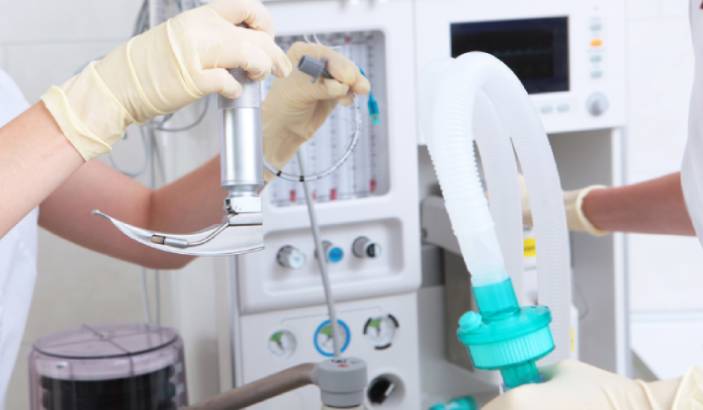To undergo surgery is a grueling and painful process. Without anesthesia, there’s no way doctors can successfully carry out one. Surgery is a crucial medical procedure that may help cure illnesses and prolong a patient’s life. Moreover, anesthesia and surgery always go together.
What Is Anesthesia?
Anesthesia is a drug treatment administered to patients to keep them from feeling pain during a medical procedure. Doctors, specifically anesthesiologists, use four types of anesthesia for surgery today: regional, monitored sedation, local, and general anesthesia (GA). This article will focus on GA.
What Is GA?
GA is a type of treatment utilized during an invasive medical procedure. This is crucial so that a surgeon can operate without the patient moving when there’s a pain stimulus. The treatment usually affects the patient’s entire body, causing loss of consciousness.
GA has three main components: analgesia, which controls the pain; areflexia, which paralyzes the patient; and amnesia, the fuzziness a patient feels so there’s no memory of the procedure. To learn more about GA, check out this next page or consult other resources online.
A Brief History Of Anesthesia
In the past, healers would ask patients to bite on a stick when performing procedures. In the 1200s, the first form of anesthesia appeared in Europe when Italian physicians used sponges soaked in opium and mandrake (plants found to have medicinal benefits) for their patients.

The demand for a less painful procedure came naturally when soldiers wounded in battle had to be amputated during the Civil War. They have suffered immensely fighting the enemies, and having their limbs cut off with just a stick to bite on would be undeserving. Since then, the search for a drug to fight off pain has begun.
The first synthetic drug used for a medical procedure was sulfuric ether vapor, utilized by a Harvard medical student named William Morton in Boston in 1846 to remove a tumor on a patient’s neck without any distress. Soon after, the development of the drug was underway.
Uses Of GA
GA is used in the most invasive and extremely painful medical procedures that the body can’t tolerate. It is also used in major operations, including knee and hip replacement surgery, heart surgeries, bariatric surgeries, plastic surgeries, and surgeries involving the neck and head.
These surgeries will most likely be unsuccessful without GA, especially for patients with low pain thresholds. Besides, for a surgeon to smoothly carry out the operation, they would need the patient to lie perfectly still.
Benefits Of GA
The most prominent benefit of GA is for a patient not to feel pain during a procedure. It also allows the surgeon to control your breathing and blood pressure, so no untoward incidents occur during the operation. GA is also beneficial because the effects are temporary and can be reversed after the surgery. Likewise, the drug can be administered continuously, safely, and effectively for procedures that will take an extended time.
Considerations In Utilizing GA
There are many considerations before deciding on using GA for a patient so they can come out of the surgery room well and whole. Here are what doctors need to look out for:
- Type of surgery
- Length of surgery
- Patient’s comorbidity
- Patient’s age, height, weight, and body mass index
- Position of the patient during the procedure
- Fluid shifts and hemodynamics
Fundamental Parts Of GA
There is no one-size-fits-all anesthesia. An anesthesiologist is like a chef choosing ingredients depending on the mentioned considerations. However, the fundamental parts are as follows:
- Induction – Introduction of anesthetics, typically vapor inhaled by the patient to fall asleep
- Maintenance – Continuing the anesthetic by adding drugs that inhibit pain during the procedure and even post-operation
- Emergence – Ending the anesthetic and waking the patient from unconsciousness
Risks Of GA
With extensive studies on GA, many doctors will tell you that it’s generally safe. Besides, most problems arise because of errors in the dosage and improper patient monitoring. However, in rare cases where a patient can become partially awake during a procedure, long-term psychological problems and post-traumatic stress disorder can ensue.
Another rare risk that happens to about one or two people in every 1,000 patients is anesthesia awareness. Often, they can be partially awake during GA, but because they can’t speak or move, the attending physician who’s entirely focused on the procedure wouldn’t know of the situation. This can severely affect the patient’s psychological state and can be a traumatic episode.
Side Effects Of GA
Waking up from anesthesia can make one feel groggy and slightly confused. Additionally, patients may feel the following side effects:
- Dry mouth
- Vomiting
- Nausea
- Muscle pain
- Chills
- Sleepiness
- Sore throat
- Voice hoarseness
There are also instances when you would feel pain after the operation. Hence, you have to communicate this with your doctor so they can prescribe you appropriate medications.
Conclusion
Many illnesses will require an invasive procedure to treat. For some, surgery can be a life-changing decision that can improve the quality of life of a patient. Furthermore, most surgeries cannot be successful without anesthesia. Therefore, GA is vital in complicated operations to enable the surgeon to carry out his duty to treat patients without causing them too much pain.








